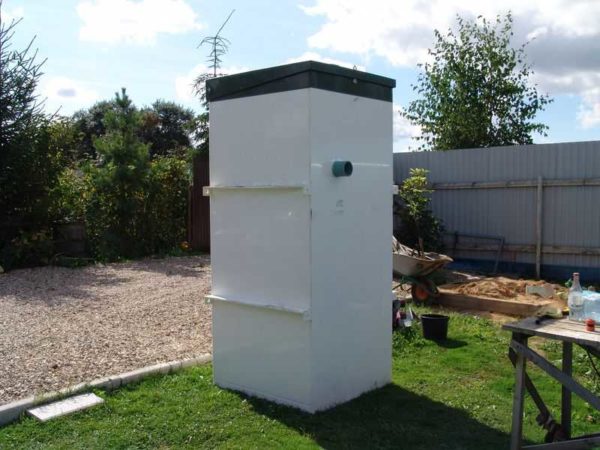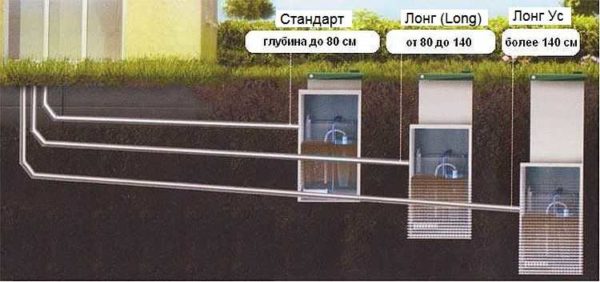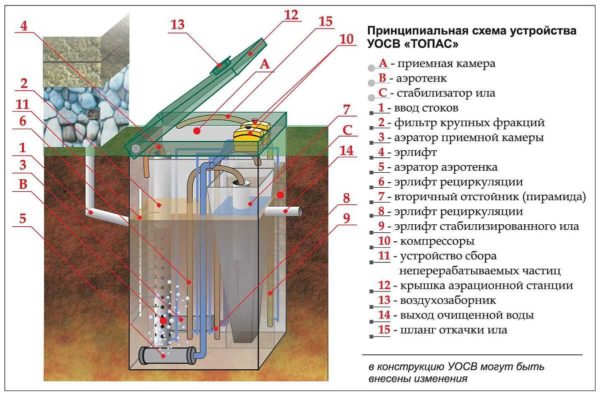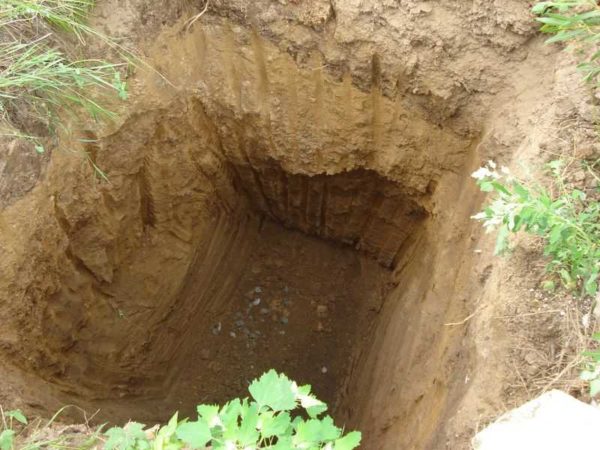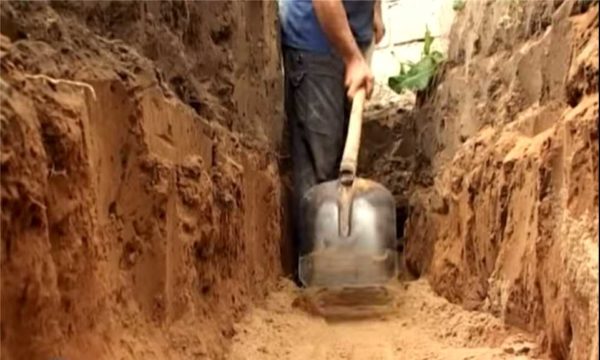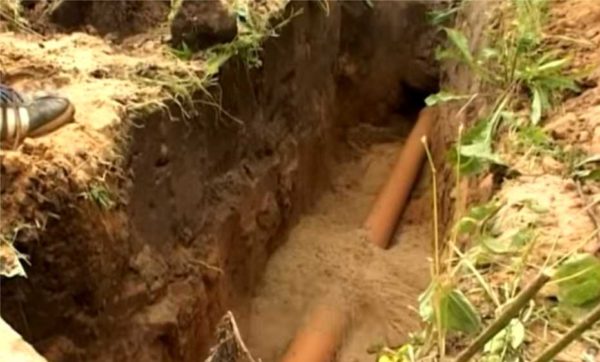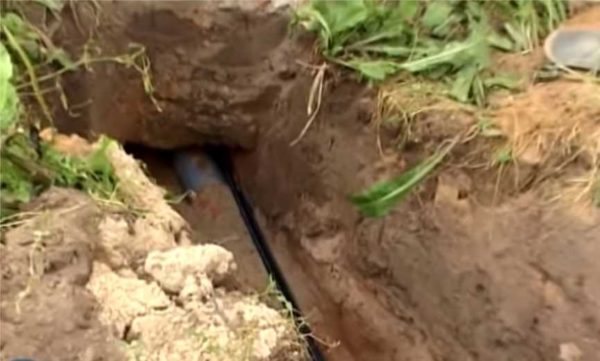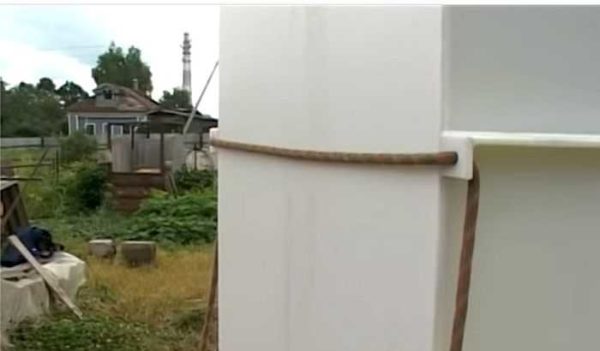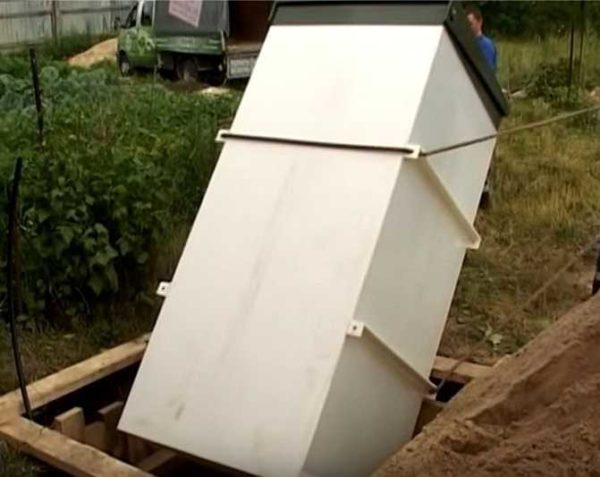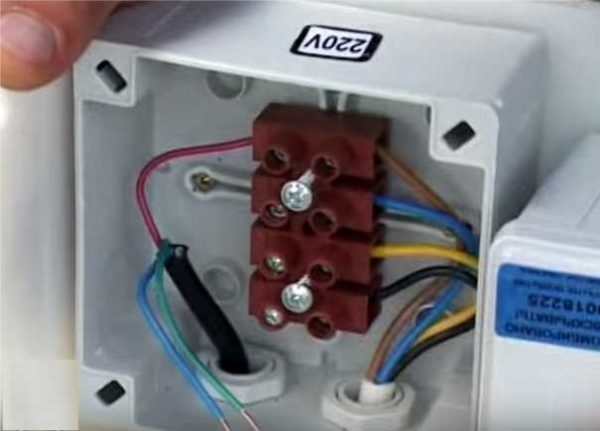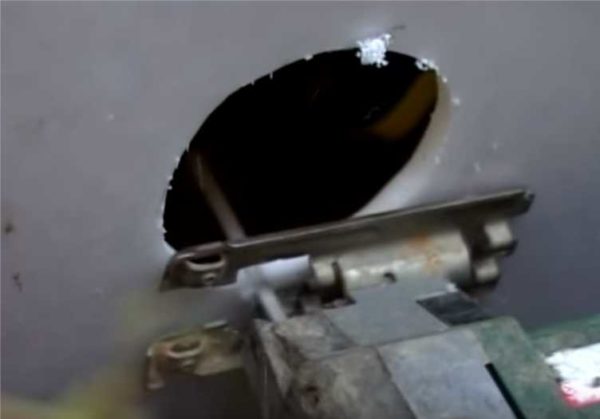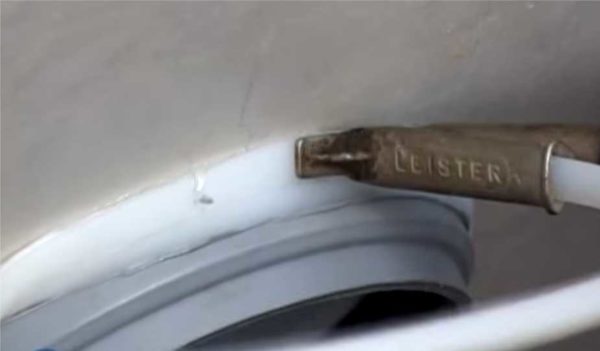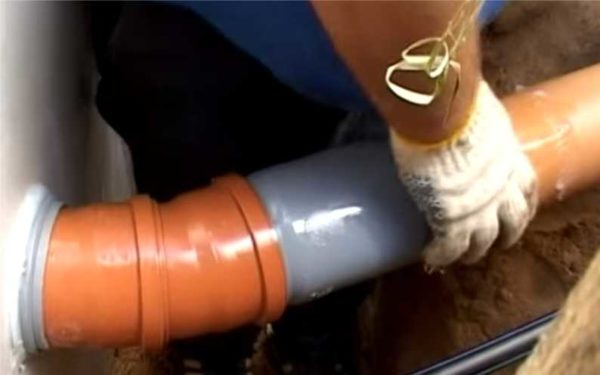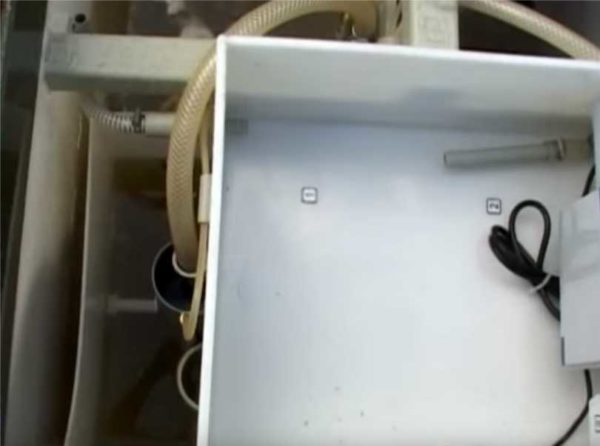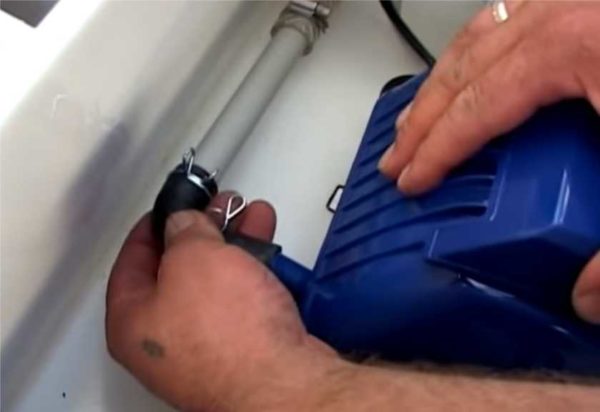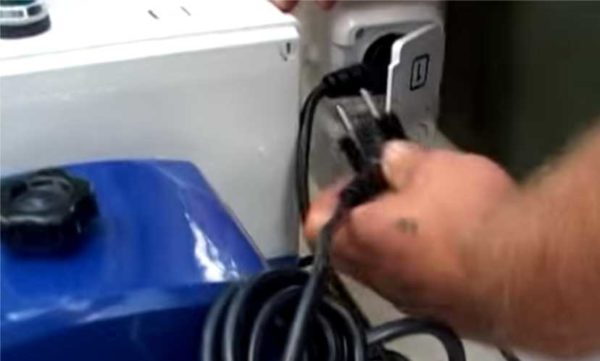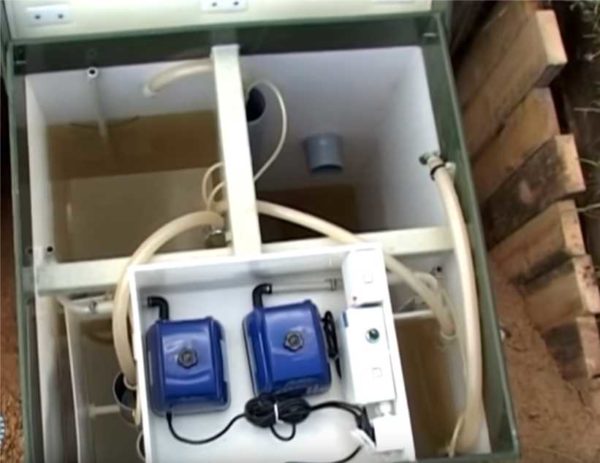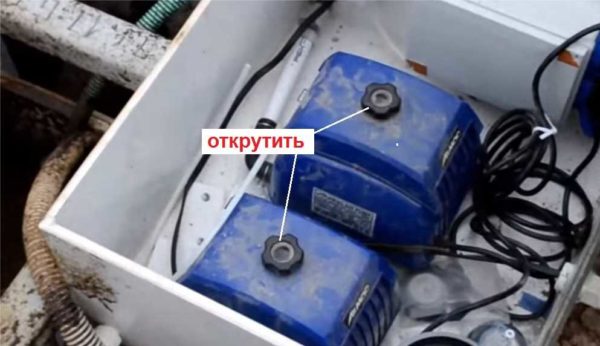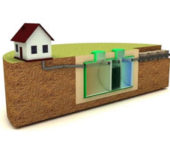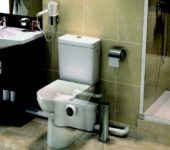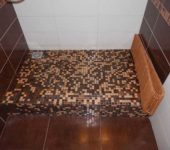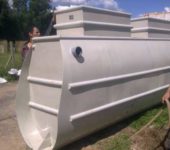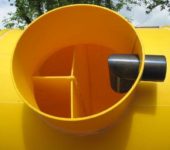Autonomous sewage system Topas
One of the ways to organize an individual sewerage system for a private house, cottage or summer cottage is to install an autonomous wastewater treatment plant. In abbreviated form, such treatment plants are called AU, and in conversation they often use the more familiar term "septic tank", although this is not entirely correct. Today we will talk about such an installation, produced by the Topol Eco campaign. Their products are called the Topas septic tank, they are widespread and have good reviews.
The content of the article
Modifications
Septic tank Topas looks like a plastic box with a lid. The unit body is made of polypropylene, so it does not corrode, does not rot, does not react with the contents or the environment.
These stations are produced with different capacities, designed to process different amounts of wastewater. In private houses and cottages, from 4 to 20 people live at the same time. For such cases, use the stations Topas 4, Topas 6, etc., to Topas 20. To service hotels, groups of houses there are more productive ones designed for 30, 40, 50, 75, 100 and 150 people.
Models have been developed for different groundwater levels: for low and high. With a high level of groundwater, it is worth choosing a septic tank Topas with a postscript - Pr. These models are equipped with an additional pump for pumping moisture into the drainage system, storm sewer, a separate tank with the possibility of its further use, etc.
There are modifications for different depths of sewerage pipes:
- up to 80 cm, models marked "standard" are suitable;
- at a depth of 80 to 140 cm - Long, have an elongated neck;
- for buried deeper than 140 cm - 240 cm - Long Us.
There are no installations for even deeper burial. When choosing an installation, you first need to decide on the maximum number of people who can live in the house at a time. In accordance with this, select the capacity of the unit. Further, the level of groundwater at the installation site of the Topas septic tank is taken into account, as well as the depth at which the supply communications should be located (depends on the depth of soil freezing in the region).
Methods for organizing an autonomous sewage system for a private house are described here.
Device and principle of operation
This autonomous wastewater treatment plant is internally divided into four compartments, each of which has its own cleaning stage. The effluent goes through all four stages of purification sequentially, at the exit, according to the manufacturer, the purification degree is 98%. Waste processing takes place with the help of aerobic bacteria that live in the presence of oxygen. To ensure their vital functions, each compartment has aerators that pump air.
The septic tank Topas works according to the following principle:
- The effluent enters the receiving chamber, where it is processed by bacteria. While filling is in progress, air is supplied to the chamber to activate the activity of bacteria. In the process, insoluble particles settle to the bottom, fat-containing particles rise to the surface. In this compartment there is a filter for coarse fractions - this is a large-diameter pipe in which holes are made. A pump is installed inside this pipe, which pumps the water that has passed through the filter. Thus, the drain enters the next compartment without large contaminants - they remain in the receiver and bacteria continue to process them. At this stage, the wastewater is purified by about 45-50%.
- Partially purified water is pumped from the receiving chamber to the second compartment - aeration tank. During filling, aeration switches here, which allows dirt particles to be raised above the surface of the water. Since the shape of the chamber is pyramidal, they settle quickly. About 20-30% of contamination remains in this compartment. With the help of pumps and special airlifts, semi-purified wastewater enters the third chamber, and excess sludge from the bottom is pumped into the stabilizing chamber.
- The third and fourth chambers are similar in structure to the second. Here, according to the same principle, the final purification of effluents takes place.
- Clarified water from the last compartment, by gravity or by means of pumps, is directed into the ground, into a container where water is stored for technical use, into a filtration column, etc.
As you understand, all the work of the Topas septic tank is based on the vital activity of bacteria. They require certain conditions - the presence of oxygen, positive temperature. The aerators supply the bacteria with oxygen, therefore it is very important to provide the installation with a continuous power supply. After a power outage, bacteria can survive for 4-8 hours. If during this time the air supply does not resume, you will have to populate the installation with new ones.
Disadvantages and features of operation
Septic tank Topas, when properly operated, cleans drains well, with regular maintenance it does not smell. With a properly selected volume, it ensures a comfortable existence of the city level, even in the country. All this is true, but there are also disadvantages:
- Dependence on the availability of electricity.
- The need for regular maintenance (2-4 times a year, list and description of work below).
- Restriction on salvo discharge. Each model of Topas septic tank can accept a certain volume of flow at a time. You cannot drain more than this volume. This can be a problem with a large number of guests.
- Not everything can be drained into an autonomous sewer. Large fragments that do not pass through the drain grate must not be allowed, newspapers, any insoluble fragments must not fall into the drains. Disinfectants, which can get there in large quantities, are very bad for bacteria.
- You need to take care of where you will drain / dispose of the treated wastewater. You cannot use them for watering a vegetable garden or garden, only for technical needs - to water the lawn, flower bed, etc., wash the car. Another option is to put a post-treatment station and dump it into a gutter (if there is one nearby), bring the treated effluent into a filter column or a pit filled with rubble - for further post-treatment and suction into the ground.
- In seasonal houses (dachas), it is necessary to preserve the system for the winter, otherwise the bacteria will die.
So there are certain restrictions on use. However, these settings give a better effect than conventional ones. septic tanks.
Installation and commissioning
Installation of a septic tank Topas begins with marking the site - it is necessary to determine the optimal installation position. There should not be large trees, bushes nearby, it should be arranged so that the sewer pipes from the house would not have to be pulled very far, but, at the same time, it was convenient to send the purified water for further processing.
Installation
A pit is being dug in the selected place. Its dimensions are 30-40 cm larger than the dimensions of the septic tank body. The depth should be such that only the manhole cover remains on the surface. It should be remembered that a 10 cm layer of sand is poured onto the bottom of the pit.
The pit is dug to the required depth, the bottom is leveled, then sand is poured 5 cm thick, each layer is spilled and leveled. The latter needs to be leveled "to the horizon" - using a rule or a flat bar on which the level is set.
A trench is being dug to the foundation pit from the house. Its depth depends on the level of the home sewer outlet.The width of the trench is at least 25 cm, but it is very difficult to work in such a trench, therefore it usually turns out wider. When digging a trench, remember that the pipe should go from the house towards the septic tank with a slope of 2 cm by 1 meter. It is not recommended to make a slope more or less. With a higher slope, the water will go away quickly, and solid particles will remain in the pipe, a lower slope will not provide the required speed of movement of drains.
The bottom of the dug trench is leveled, a 10 cm layer of sand is poured onto it, compacted and leveled, forming a given slope. A polypropylene sewer pipe for outdoor use is laid on the sand. Its diameter is 110 mm. When connecting the segments, in addition to the O-rings, the joints are coated with silicone sealant for outdoor use.
The pipeline is connected to the outlet and is laid with a predetermined slope into the trench. The slope is checked using a level. The pipe is covered with sand (not soil), which serves to compensate for the soil pressure during frost heaving. Fall asleep so that the top of the pipe is covered with sand.
In the same trench, along the sewer pipe, a supply cable is laid, which goes to the Topas septic tank. Usually they take a VVG cable 4 * 1.5 mm. It is laid in a HDPE pipe (polyethylene pipe low pressure) with a diameter of 20 mm. A cable wound in a protective sheath is laid in a trench, brought into a house, where the cable is terminated with a plug. The second end of the cable will need to be connected to a septic tank.
The next stage in the installation of the Topas autonomous sewage system is the installation of the device in the prepared pit. It must be lowered carefully, without impacts. Polypropylene, although a durable material, is still plastic, so it can crack on impact. You can lower the septic tank Topas manually or using a manipulator crane. There are holes in the ribs along the perimeter of the hull so that the ropes can be securely fixed. A rope is stretched in them. One at the bottom, the second in the middle of the height. The rope should span two opposite sides of the body.
Holding these ropes, the installation is carefully lowered into the pit. Then, placing a level on the lid, they check how smoothly the Topas septic tank has become.
A gap of 20-30 cm remains between the walls of the body and the pit. It must be filled with sand. Gradually, in a circle, fill the walls, while filling the septic tank with water. At the same time, we make sure that the water level and the sand level are approximately equal. Having poured a layer of 40-50 cm, sand is spilled with water. At the same time, it becomes denser, sinks lower in level. So, gradually, the pit is filled up to the top. After that, it can be assumed that the Topas septic tank is installed, the installation and connection of its equipment begins.
Read about non-volatile septic tanks here.
Installation of equipment
First, we connect the power cable. To do this, remove the protective cover on the input box, connect the wires to the mounting plate in accordance with the diagram. The ends of the conductors are stripped of insulation by 0.8-1 mm, inserted into the appropriate sockets, and fixed with clamping screws.
The next step is to connect the sewage system from the house. It is brought to the very body of the septic tank. In the place where the pipe will enter the body, circle the pipe, drawing a circle. Then, using a jigsaw, cut out a hole.
The hole is coated with silicone sealant. A piece of pipe with a socket at the end is inserted into it so that the
the rub turned out to be outside, besides, it should fit snugly against the body (you can hit it with your fist so that it becomes good). The joint obtained is sealed by fusing a polypropylene tape 7 mm thick.
The sewage system connected from the house is connected to the established pipe section (do not forget to coat the joints with silicone).
Next, we install the pumps. There are markings inside the case: numbers "1" and "2" on sockets, on branch pipes and on a shelf. The same numbers are found on the pump casings.
We install the pumps according to this marking, connecting pipes to their inputs (visible in the photo above). We install flexible couplings on the nozzles, put the second end on the pump inlet, plug the plug into the socket on the body with the same number.
Actually, on this we can assume that the Topas septic tank is mounted. It remains to conduct a test run. To do this, they turn on the autonomous sewage system Topas into the network, start pouring water into the receiving compartment (so far without drains). Until the compartment is full, the float sensor is at the bottom, air is poured into the receiving chamber. When the water level reaches a certain point, the float will float up, the air supply will switch to the aerotank - the second pyramid compartment. Then it remains only to start using the sewage system, tracking the results of cleaning. We must say right away that in the first month with intensive use, drains can come out unclear. This is because bacteria are still few in number and they are not fully up to the task. After a month, the situation should improve.
Service
Installations of autonomous wastewater treatment, to which the Topas septic tank belongs, are often called sewage without pumping. This does not mean that the installation requires no maintenance at all. The point is that there is no need to call a sewer truck, but it is necessary to remove sludge periodically. How often? 1-4 times a year, depending on the intensity of use.
It is also periodically necessary to remove fragments from the receiving compartment that the bacteria cannot process. This operation is carried out with a net by opening the lid. And one more procedure is cleaning the filter of coarse fractions and airlifts. The efficiency of the installation depends on their condition.
Cleaning filters
Another operation that must be carried out regularly is cleaning the filters on the pumps. To do this, unscrew the large plastic nuts that are located on the top of the pumps. By removing the nuts, you can lift the covers, under which the filters are located. If the filters are clean, nothing needs to be done with them; if there is contamination, they are washed in cold running water, dried and reinstalled.
Removing excess sludge
Excess activated sludge, which is formed during operation, enters the stabilizing chamber, where it is mineralized. They must be removed from this compartment periodically. The recommended frequency of the procedure is once every three months, but many determine that the time has come by the appearance of an odor, which indicates that sludge has accumulated. Removal takes place using a pump (airlift) in the stabilization chamber. This process is simple, all you need is:
- Turn off the power (toggle switch).
- Put on gloves, substitute the bucket.
- Open the cover.
- Lower the hose into the bucket, turn on the pump.
- After cleaning the chamber, fill the chamber with clean water, close the cap.
This operation can be carried out using a fecal pump. In this case, pumping can be done once a year.
Cleaning the filter and airlifts
During operation, the filter and airlifts become dirty, which affects the efficiency of wastewater treatment. They must be cleaned to restore. This is done using a powerful stream of water; the air cleaner nozzles are manually cleaned with a needle. The procedure for cleansing the Topas septic tank is as follows:
- Switch off the power supply.
- Disconnect air supply hoses, remove pumps from housing.
- Spray with a jet of water under pressure - outside and inside.
- When cleaning the air cleaner, clean the nozzles with a needle.
- Put everything in place, top up with water to the working level, switch on and check the operation.
This is all the necessary maintenance work for the Topas septic tank.

